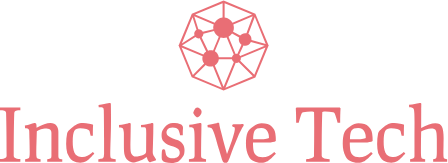In the hustle and bustle of the digital age, finding moments of tranquility and mindfulness can seem like a daunting task. However, with the rise of mindful tech tools, individuals can harness the power of technology to enhance their well-being and promote a sense of balance in their lives. In this comprehensive guide, we will delve into the world of mindful tech tools, exploring their benefits, applications, and how they can empower users to lead more fulfilling lives in the digital era.
The Rise of Mindful Tech Tools
The rise of mindful tech tools marks a significant shift in how we approach well-being in the digital age. With the rapid advancements in technology, there’s been a growing recognition of the need to counterbalance the negative impacts of constant connectivity and digital overwhelm. Mindful tech tools offer a proactive solution, empowering individuals to leverage technology in a way that supports their mental health and overall wellness.
These innovative tools encompass a wide range of applications, from meditation apps to wearable devices equipped with biofeedback sensors. What sets them apart is their focus on integrating mindfulness principles into our digital experiences seamlessly. By incorporating features like guided meditation sessions, relaxation exercises, and mindfulness reminders, these tools facilitate the cultivation of mindfulness amidst the hustle and bustle of modern life.
Moreover, the increasing popularity of mindful tech tools reflects a broader cultural shift towards prioritizing self-care and holistic well-being. As more people recognize the importance of mental health in achieving a balanced lifestyle, they are turning to technology as a means of supporting their journey towards greater mindfulness and resilience. Ultimately, the rise of mindful tech tools represents a promising step towards harnessing the potential of technology to enhance our well-being in the digital age.
Understanding Mindfulness in the Digital Context
Understanding Mindfulness in the Digital Context requires a nuanced approach to navigating the intersection of technology and well-being. Here’s a breakdown of key considerations:
| Challenges | Solutions |
| Digital Distractions | Mindful Tech Tools that offer features like guided meditation sessions, focus timers, and notification management to minimize distractions. |
| Constant Connectivity | Incorporating digital detox practices and setting boundaries around technology use to create space for mindfulness. |
| Information Overload | Utilizing mindfulness apps and tools that promote selective attention and information filtering, helping users manage overwhelm. |
| Social Media Stress | Engaging in mindful social media usage by setting intentionality around content consumption and practicing digital self-care. |
In essence, understanding mindfulness in the digital context entails recognizing the challenges posed by technology while leveraging mindful tech tools and strategies to cultivate a more balanced and intentional relationship with digital devices and platforms.
Exploring the Benefits of Mindful Tech Tools
Mindful tech tools offer a wide range of benefits for users looking to enhance their well-being. Some of the key advantages include:
- Stress Reduction: By incorporating mindfulness practices into daily routines, users can effectively manage stress and anxiety, leading to greater overall resilience and emotional well-being.
- Improved Focus and Concentration: Mindfulness techniques such as meditation and deep breathing exercises have been shown to enhance focus and concentration, allowing users to work more efficiently and productively.
- Enhanced Sleep Quality: Many mindful tech tools offer features designed to promote better sleep, such as guided sleep meditations and relaxation exercises, helping users achieve deeper and more restful sleep.
- Increased Self-Awareness: By fostering a greater sense of self-awareness, mindful tech tools enable users to identify and address negative thought patterns and behaviors, leading to greater personal growth and development.
Harnessing the Power of Mindful Tech Tools
Harnessing the Power of Mindful Tech Tools opens doors to a myriad of opportunities for enhancing well-being in our increasingly digital lives. These tools empower individuals to integrate mindfulness practices seamlessly into their daily routines, fostering a sense of balance and presence amidst the hustle and bustle of modern life. From meditation apps offering guided sessions tailored to individual needs to wearable devices equipped with biofeedback sensors, the versatility of mindful tech tools ensures that there’s something for everyone seeking to prioritize their mental health and wellness.
By experimenting with different mindful tech tools, users can discover which ones resonate most with their preferences and lifestyle. Whether it’s incorporating short mindfulness breaks into a busy workday or winding down with a guided meditation before bed, these tools offer customizable solutions to suit diverse needs. Moreover, the accessibility of mindful tech tools ensures that anyone, regardless of experience level or background, can reap the benefits of mindfulness and technology synergy.
Ultimately, harnessing the power of mindful tech tools empowers individuals to take control of their digital experiences and prioritize their well-being in an increasingly connected world. By embracing these innovative solutions and integrating them into our daily lives, we can cultivate greater mindfulness, resilience, and overall quality of life.
Frequently Asked Questions (FAQs)
- How do mindful tech tools promote well-being? Mindful tech tools promote well-being by integrating mindfulness practices into our digital lives, helping users manage stress, improve focus, and cultivate greater self-awareness.
- Are mindful tech tools suitable for beginners? Yes, many mindful tech tools offer beginner-friendly features such as guided meditations and simple breathing exercises, making them accessible to users of all experience levels.
- Can mindful tech tools replace traditional mindfulness practices? While mindful tech tools can be a valuable supplement to traditional mindfulness practices, they are not intended to replace them entirely. It’s essential to find a balance between digital and offline mindfulness activities for optimal well-being.
- How often should I use mindful tech tools? The frequency of use will vary depending on individual preferences and goals. Some users may benefit from using mindful tech tools daily, while others may prefer to incorporate them into their routine on an as-needed basis.
- Are mindful tech tools effective for managing stress? Yes, many studies have demonstrated the effectiveness of mindful tech tools in reducing stress and promoting relaxation. However, results may vary depending on individual factors and consistency of use.
- Can mindful tech tools help improve sleep quality? Absolutely, many mindful tech tools offer features specifically designed to promote better sleep, such as guided sleep meditations and relaxation exercises.

